MuVIM
Mujeres Ceramistas del Paraguay (Women Ceramicists of Paraguay)
With the work of Julia Isídrez, Carolina Noguera Y Ediltrudis Noguera
10 y Guillen de Castro 8 | 46001, Valencia
The current exhibition at MuVIM displaying the ceramic art of three female artists from Paraguay is the perfect appetizer for other exhibitions in the museum. The exhibit runs through May 10, 2026 and is worth a visit, even if you just pop in for about 30 minutes to only look at this exhibit (it is free).
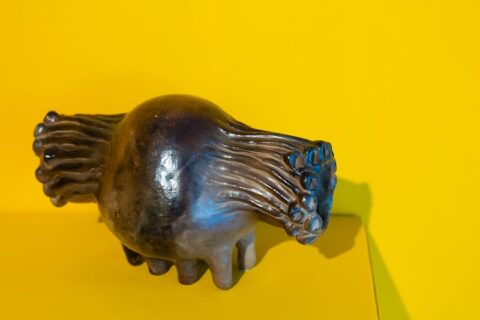 The pieces on display are at once traditional and organic with a modern feel to them. The tactile look and delicate feel even in the larger pieces belies the South American origin. These feel primitive but the images created are at the same time of this century. The sculptures on display offer a delicacy and humor that will make you smile broadly.
The pieces on display are at once traditional and organic with a modern feel to them. The tactile look and delicate feel even in the larger pieces belies the South American origin. These feel primitive but the images created are at the same time of this century. The sculptures on display offer a delicacy and humor that will make you smile broadly.
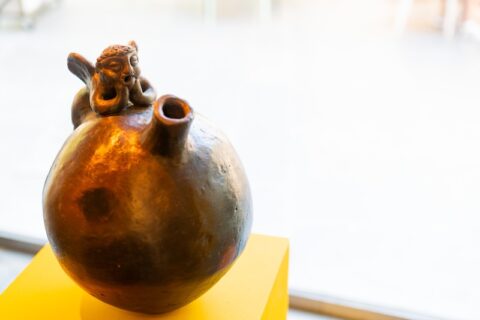 This is from the MuVIM Web site:
This is from the MuVIM Web site:
Itá and Tobatí pottery in Paraguay is one of the most powerful expressions of popular culture in the country. Its history is formed in the intersection – never simple, always tense – between the Guarani indigenous ceramics and the colonial pottery introduced by the Spanish in the sixteenth century.From this forced and persistent fusion is born a practice that, without losing its ancestral roots, has managed to reinvent itself time and time again.
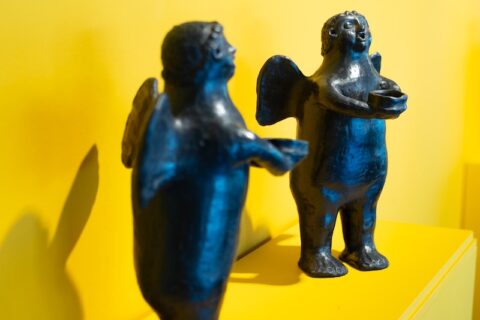 Since pre-Hispanic times, Guarani women worked mud. This tradition has survived through the transmission of mothers to daughters. The modeling by colombín, the use of natural engobe (*mixture of clay and water) and smoking are part of an inherited grammar that each artist signifies in her own way. Unlike Jesuit ceramics or the one produced with Torno, in these communities ñai’upo —the ceramic work— is feminine, domestic and communal. Each piece, however, bears the singular mark of the one who made it.
Since pre-Hispanic times, Guarani women worked mud. This tradition has survived through the transmission of mothers to daughters. The modeling by colombín, the use of natural engobe (*mixture of clay and water) and smoking are part of an inherited grammar that each artist signifies in her own way. Unlike Jesuit ceramics or the one produced with Torno, in these communities ñai’upo —the ceramic work— is feminine, domestic and communal. Each piece, however, bears the singular mark of the one who made it.
This exhibition brings together pieces by three ceramists who, based on that tradition, generated work in a contemporary key: Julia Isídrez, Ediltrudis Noguera and Carolina Noguera.
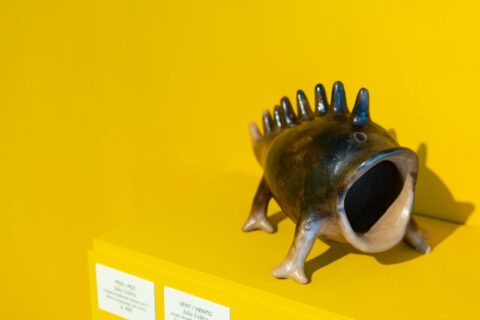 Julia Isídrez, born in Itá and trained with her mother, Juana Marta Rodas, has taken Paraguayan ceramics to international stages. Based on ancestral techniques, her sculptures incorporate fantastic elements and organic textures that reconfigure the traditional language of clay. Julia has participated in the last Biennal de Arte de Venezia.
Julia Isídrez, born in Itá and trained with her mother, Juana Marta Rodas, has taken Paraguayan ceramics to international stages. Based on ancestral techniques, her sculptures incorporate fantastic elements and organic textures that reconfigure the traditional language of clay. Julia has participated in the last Biennal de Arte de Venezia.
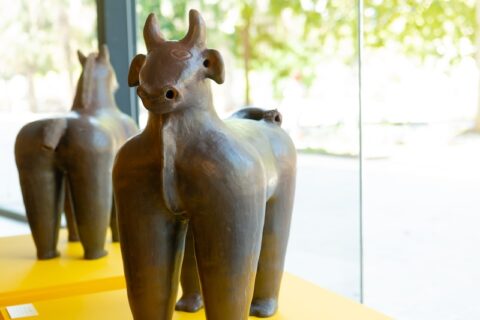 Ediltrudis Noguera, from Tobatí, hand models zoomorphic and anthropomorphic figures with home tools. Her pieces, full of symbolic force, dialog with Mediterranean sculpture and Latin American Baroque, evoking their own universe.
Ediltrudis Noguera, from Tobatí, hand models zoomorphic and anthropomorphic figures with home tools. Her pieces, full of symbolic force, dialog with Mediterranean sculpture and Latin American Baroque, evoking their own universe.
Carolina Noguera, her sister, transforms the black clay into figures of protective angels who narrate her personal story, marked by motherhood, care and resistance.
